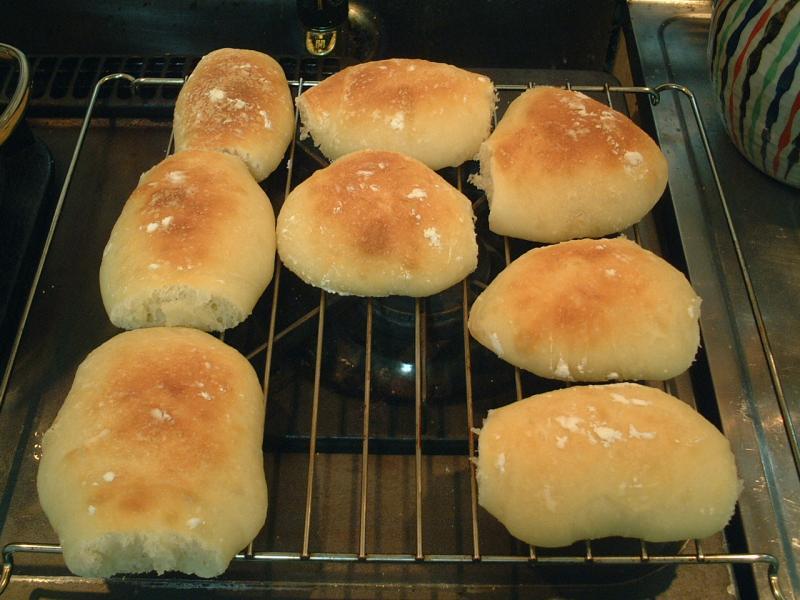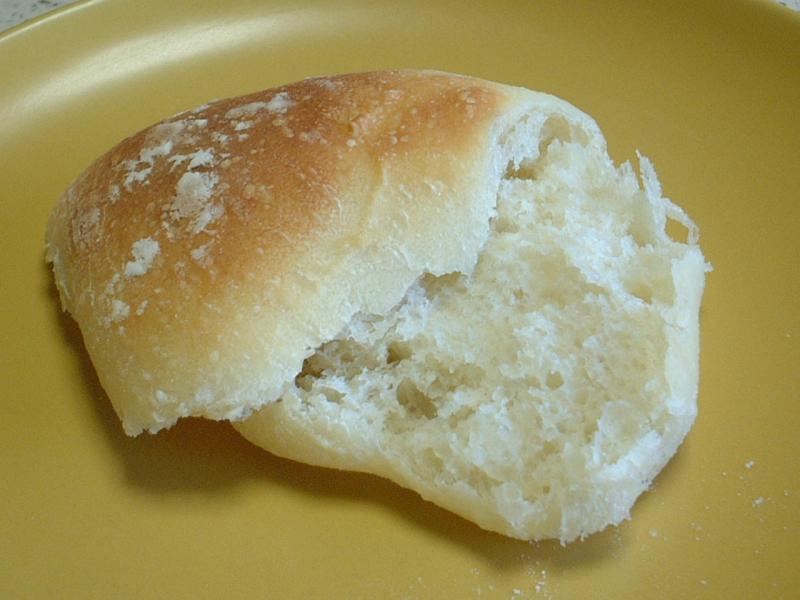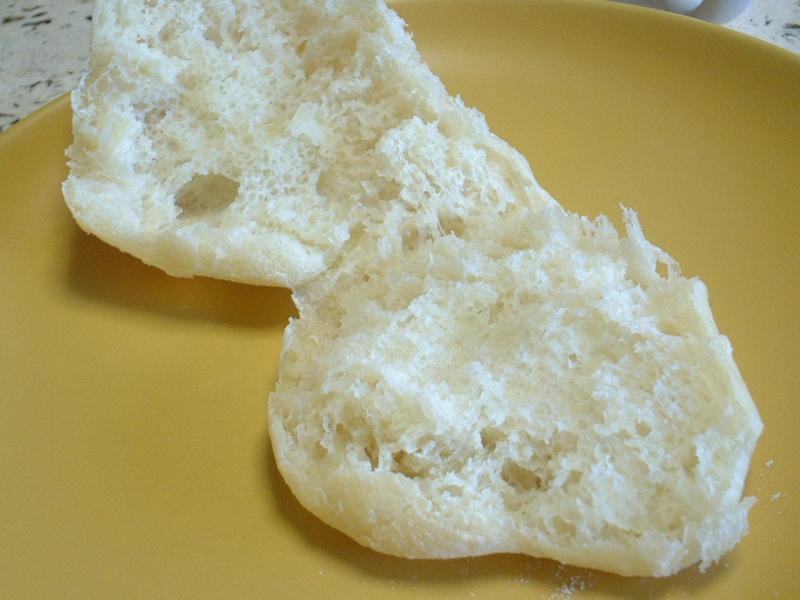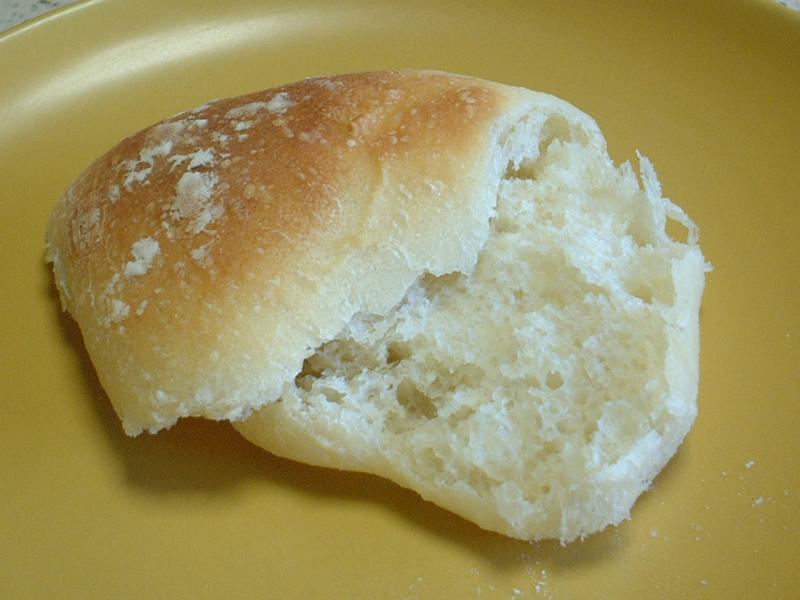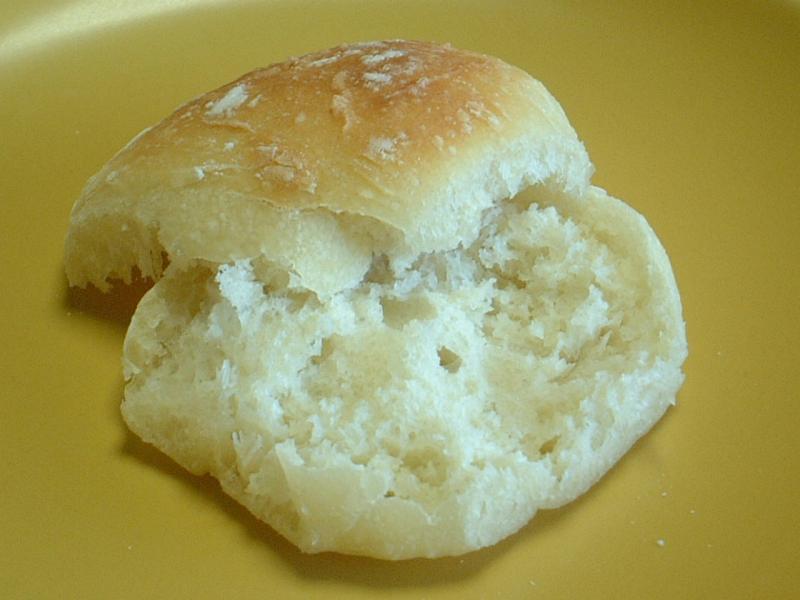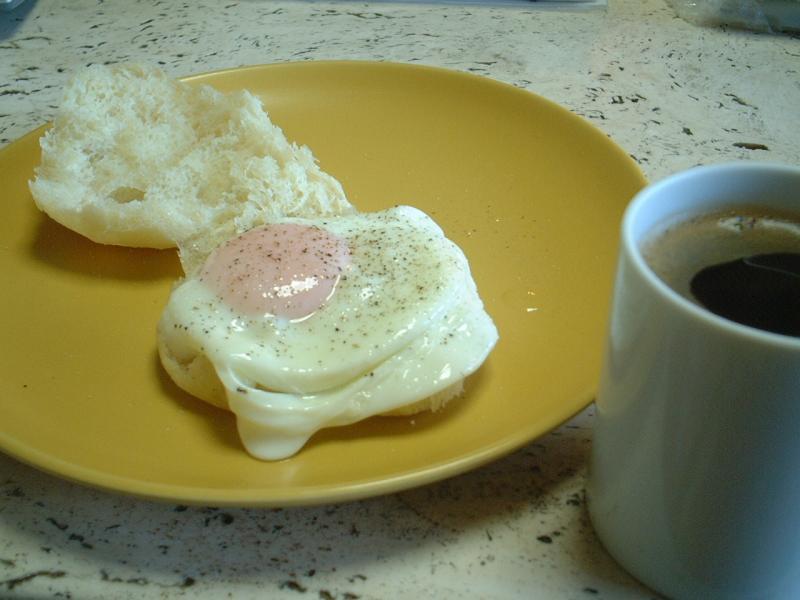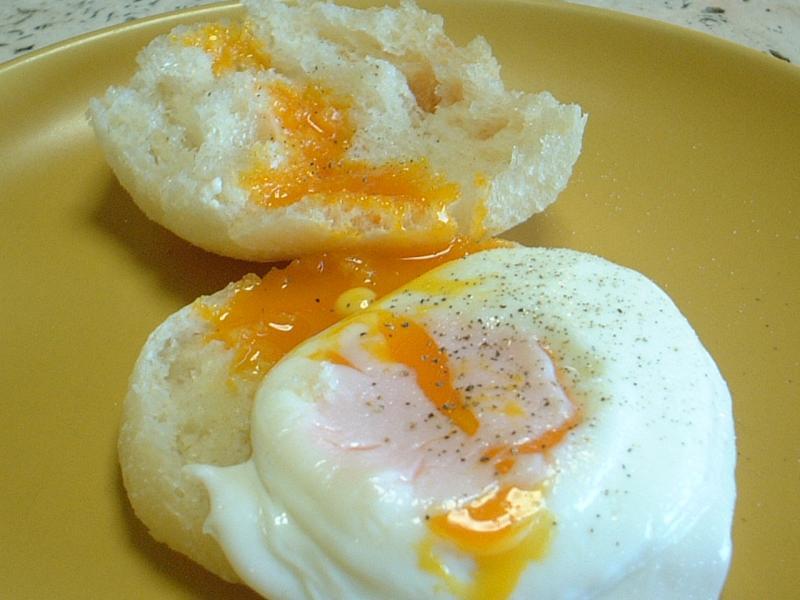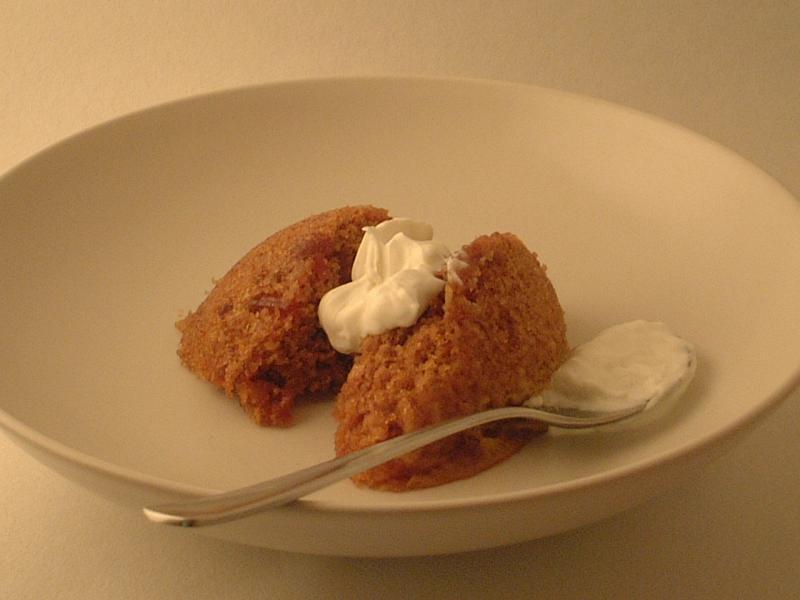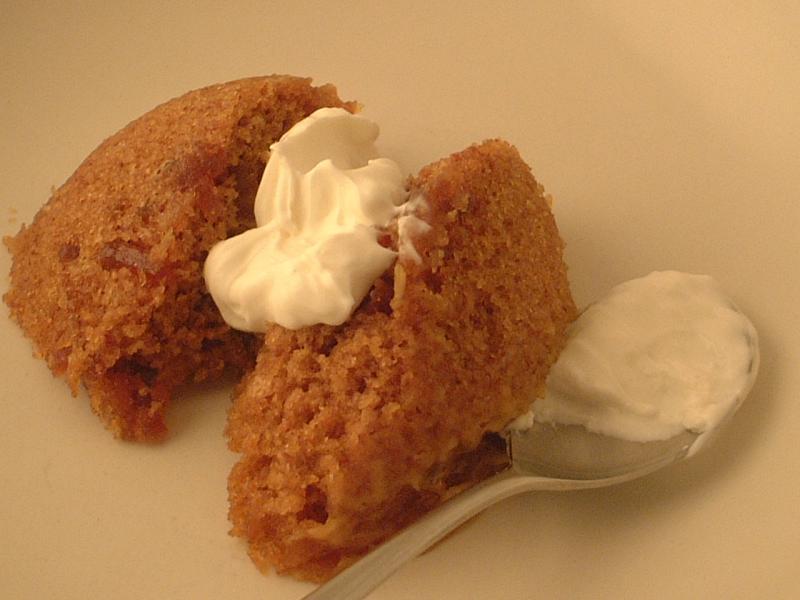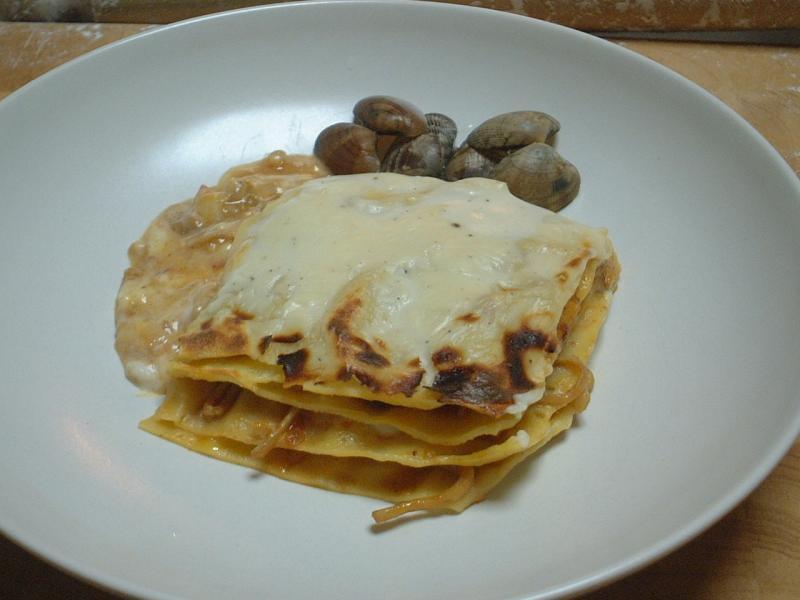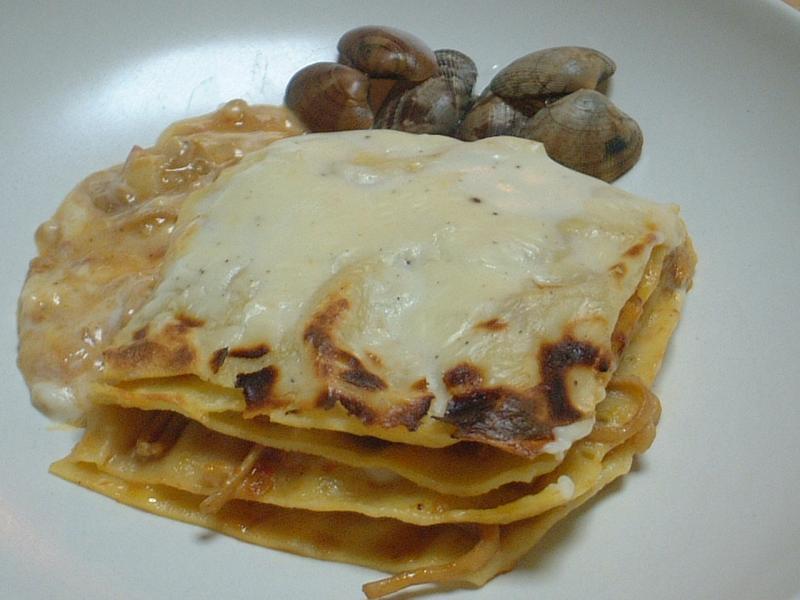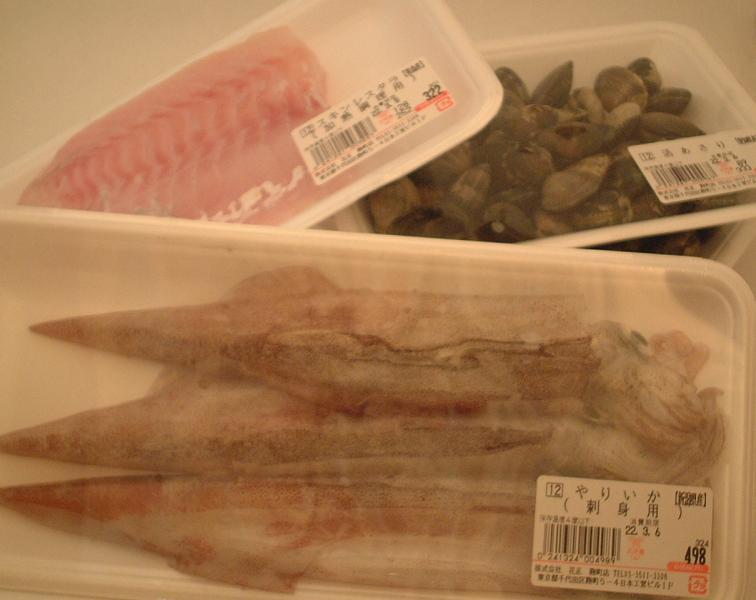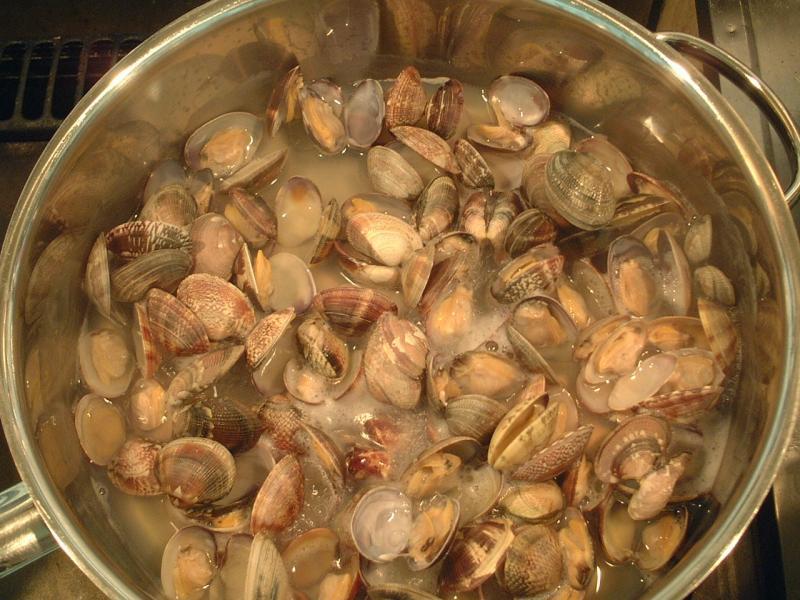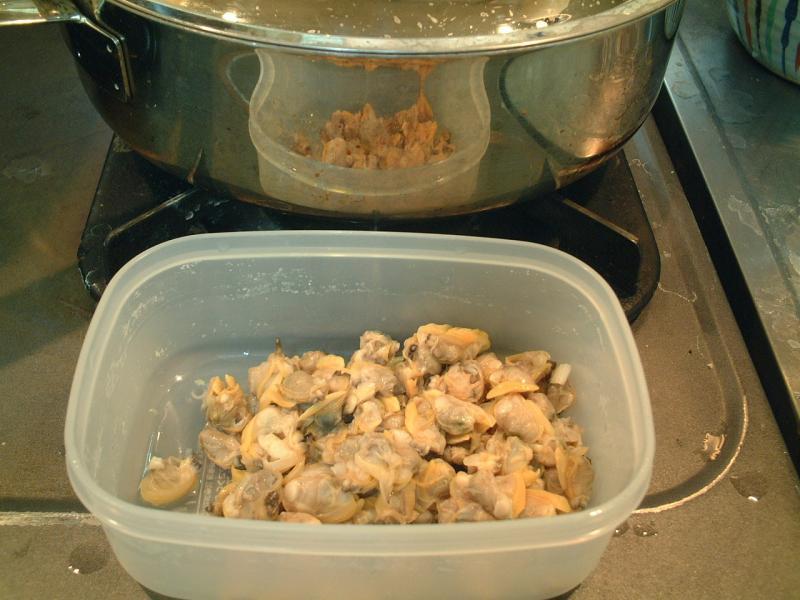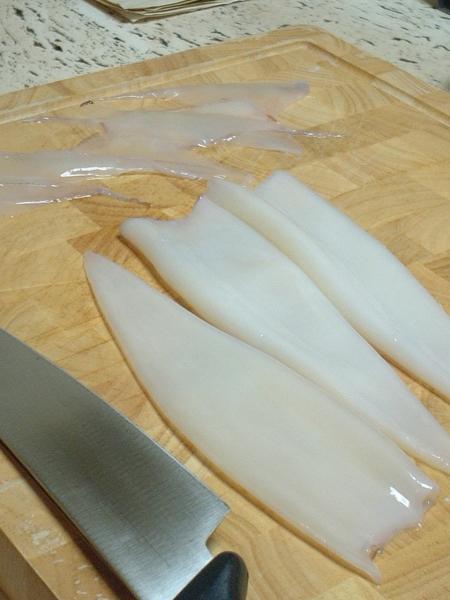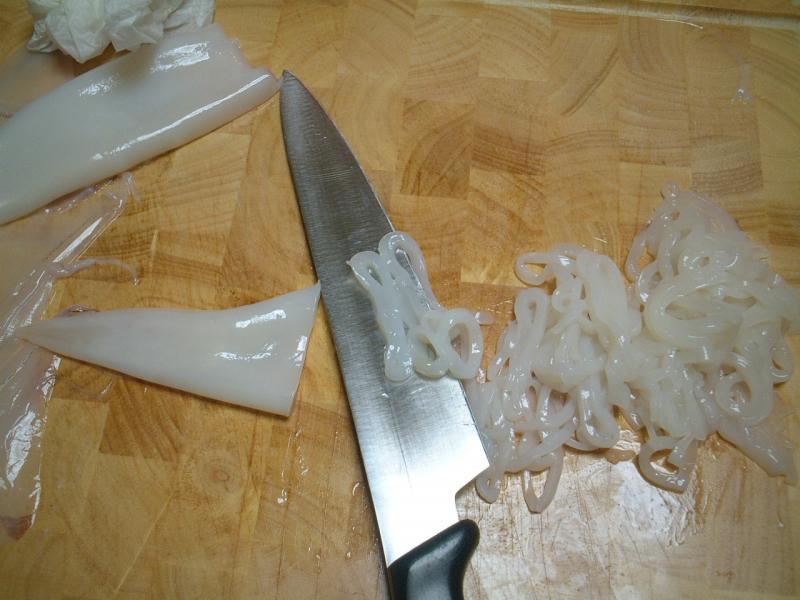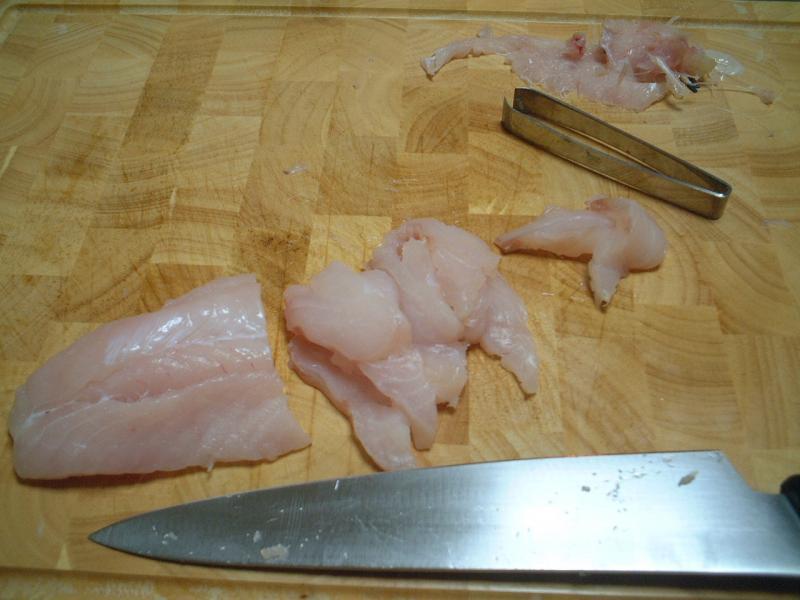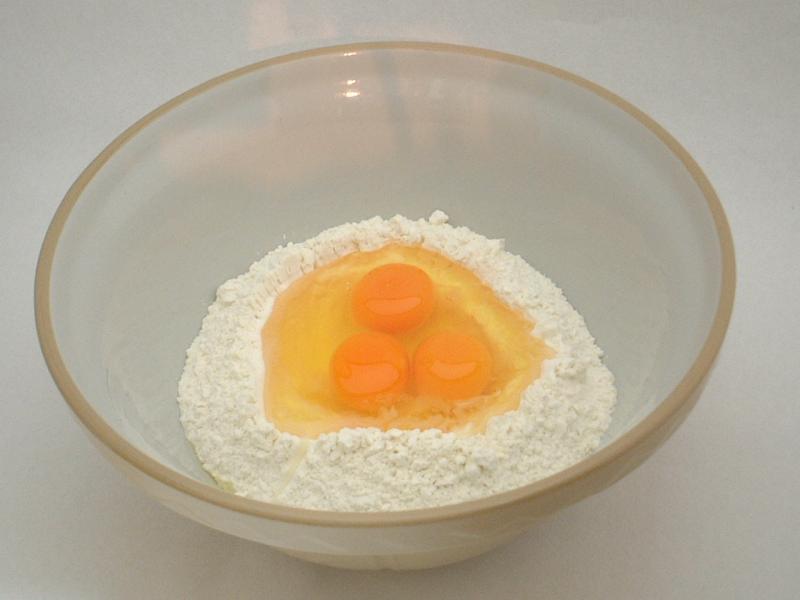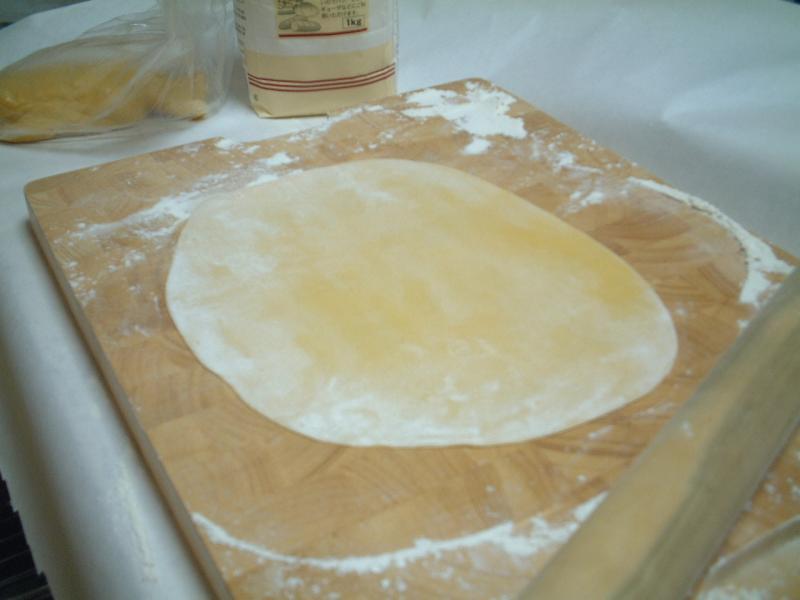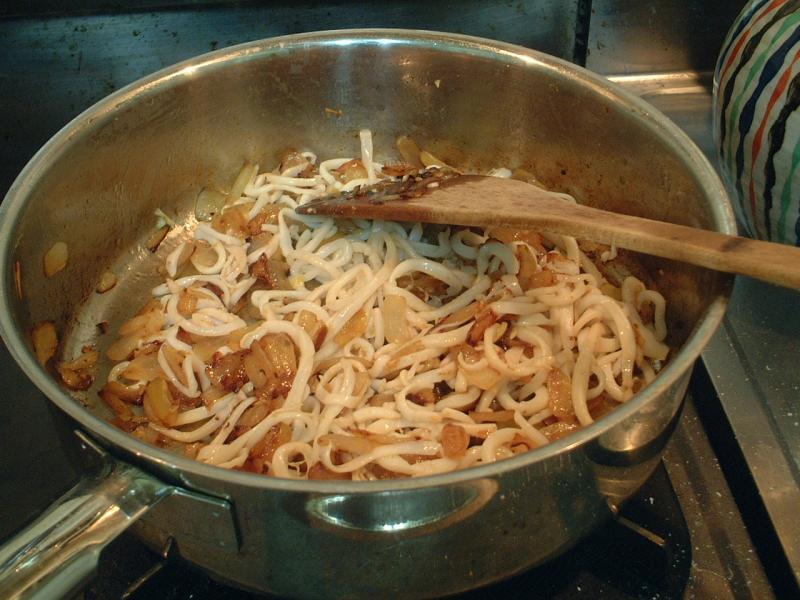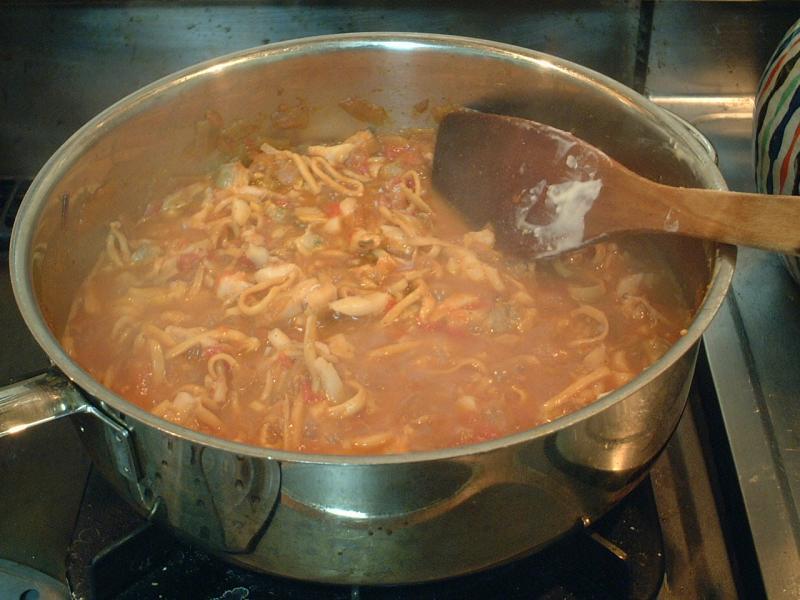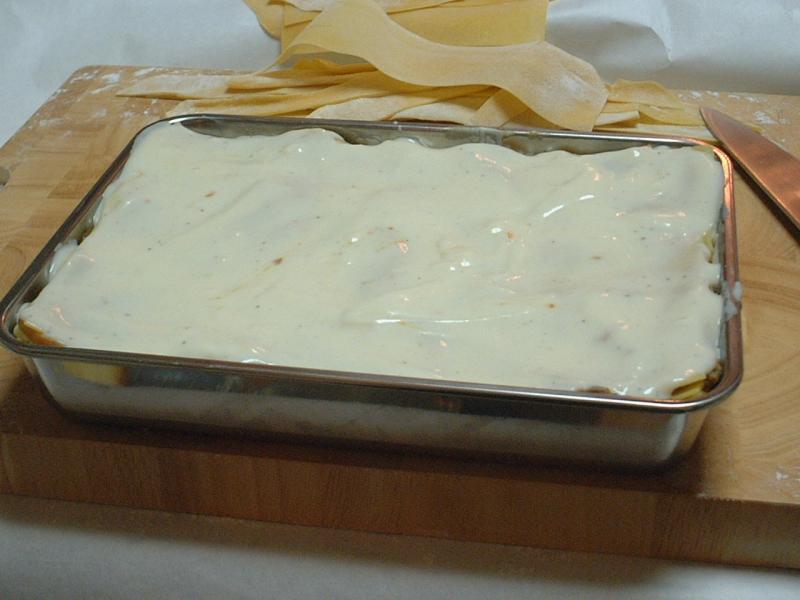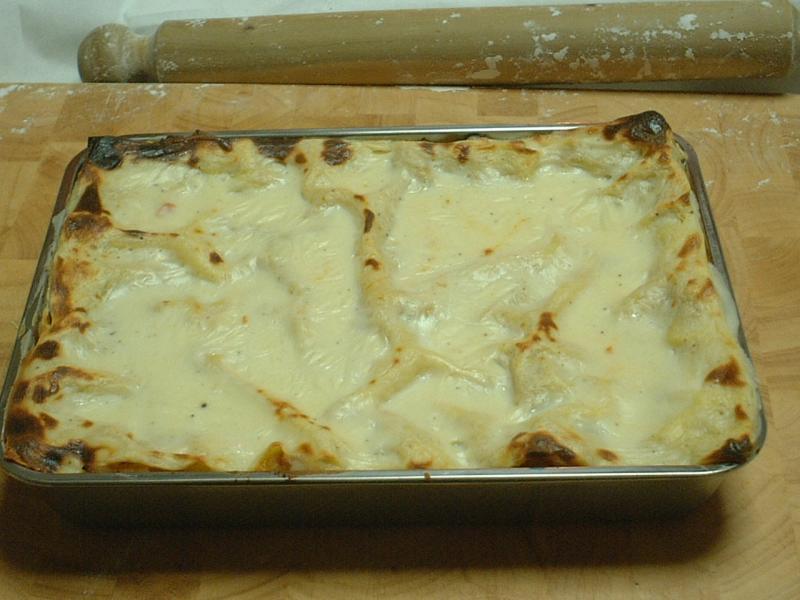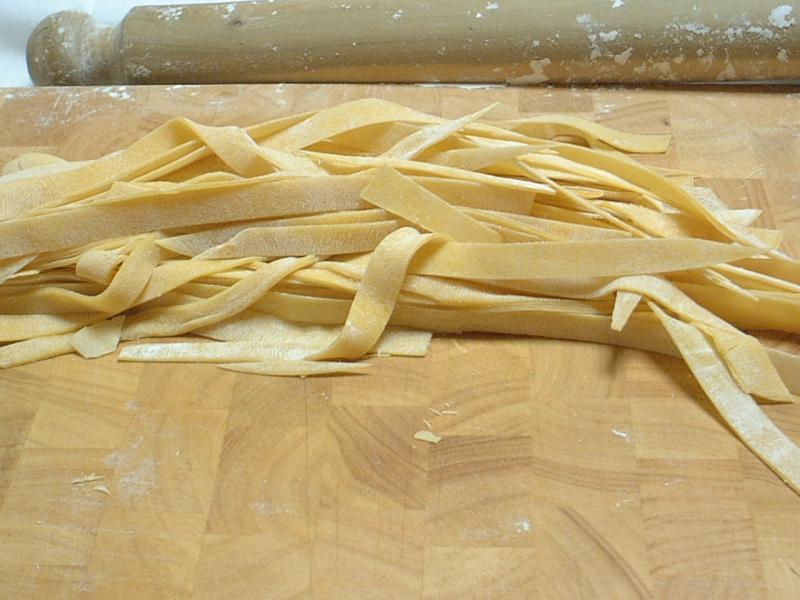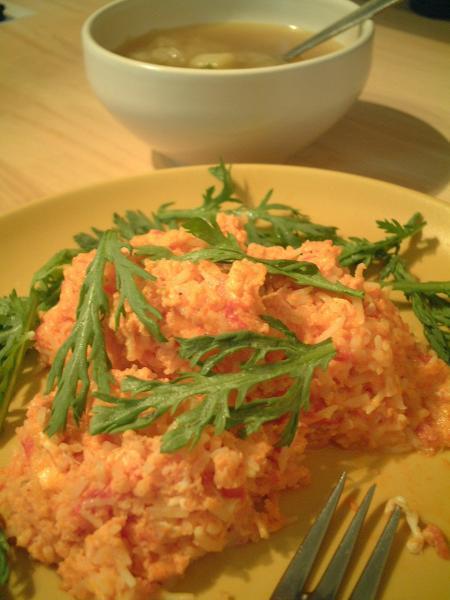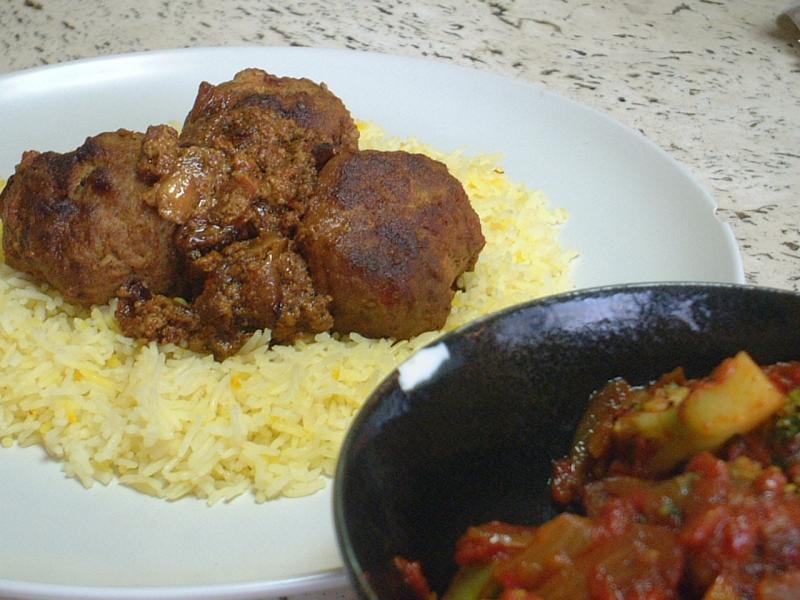-
Posts
1,728 -
Joined
-
Last visited
Content Type
Profiles
Forums
Store
Help Articles
Everything posted by Blether
-
I'm sure you're better with it than I am with mine. I love my palette knife (8 bucks, roughly, IIRC, and bright stainless steel), but it doesn't get near my frypans.
-
Yikes ! What do you use for picking up soft-yolked fried eggs ?
-
Hi Nayan, That's a good question. I hadn't really thought about it. Tracey, thanks for posting. I've been meaning to say thank-you just as I start to make a batch, but haven't yet got round to picking up a container / airlock yet. Now it sounds like I'll have to moor my brewing kit more than 5 miles offshore. Or fly it on a kite with more than 5 miles of string ? eta: a quick google turns up this blog on homebrewing in Japan, which links this 1999 article from The Japan Times, which says:
-
I baked these rolls last night (!) as another step in a quest to replicate Scottish Morning Rolls. From working with pizza and bread from long-rise doughs, I know the long rise is one secret to the flavour. I've tried sponge-and-dough methods and not been bowled over by any difference in results. This time I used my standard white bread dough - 400g strong (15%) Canadian flour, no additives; 310ml water; 1/4tsp Saf-instant dried yeast; 20g olive oil; 10g salt; a tiny bit of sugar, say 1/8tsp. I didn't especially keep count of the time, but after kneading (in the breadmaker, first 5 minutes of the pizza dough cycle) I kept it in an oiled plastic bag in the fridge. I made it on the same night I made lasagne dough (made lasagne, this dough, and one breadmaker loaf - saves washing the b/maker tin out), so it would have been five days in the fridge before I shaped and baked. I tore the dough into three, and each of those into three pieces. I flattened each piece out into a long rectangle-ish shape, and folded one end over, and the other end over that, in thirds. Each was then dipped in flour, and I lined the nine of them up in turn on a baking tray, covered with plastic and left for 4 or 5 hours at room temp of 20C. I baked them on the top shelf at 220C, turning up to 230C later for more browning, checking from 15 minutes and eventually baking for 25. I was a bit apprehensive about how flat the rolls were looking (sorry, no unbaked pictures) before they went in the oven, but at the higher temperature I got more oven spring than I've seen before (I think at lower temperatures). I'm pleased with crumb and crust. With such strong flour, the rolls are dense, heavy for their size, but by no means unpleasant. I couldn't resist one of them buttered, hot from the oven, and that gave me a chance to relive the authentic pulling-out-and-discarding-some-of-the-internal-dough-ball experience (the roll shown here, this morning, is complete). The flavour is also good - for such a strong flour. I do think I want to go back down a little in flour strength, to get more flavour.
-
Those look gorgeous, robirdstx and Pam. Down here at the less sophisticated end of the breakfast scale, I baked off these fridge-retard-dough rolls last night: and had a lazy breakfast. I've called them 'old-fashioned' before - these are proper country-style eggs, with yolks that really have a depth of eggy flavour - from the chickens eating greens ? You can see where this is leading. I was going to leave it at that, but I thought from the start I'd be having two, and Percy, I knew you'd be disappointed if I missed it out. Roll #2 - the money shot:
-
Collapsible moulds are good for en croute treatments, but typically, unlined, don't seal against leaking liquid. Have you looked through The Terrine Topic ? There's good information in there about containers, too, and as a fan of French terrines, I think you'll find reading through it to be a trip in itself. There's some truly stunning pieces of work in there, by various eG members. You could do worse than forgo a mould entirely and do as Baron d'Apcher does (see the latest page, page 10, various posts). Will we see your own terrines in there, mr drinkie ? I need to jump in there myself at some point.
-
Well, if I had to pick a winner, it'd be lamb chops, cornbread chicken, fig tart, stuffed pork loin, vegetarian chilli, pizza a l'ancienne, coconut beef, and steak & 3-cook chips. Meanwhile this evening's snow looks to have ceded to rain, not so's you'd notice it's any warmer. Hot marmalade pudding reprise, this time with a spoonful of as-before home-made-from-milk labneh / Greek yoghurt:
-

Full English/Irish/Scottish/Welsh Breakfast
Blether replied to a topic in United Kingdom & Ireland: Cooking & Baking
I like that. I thought I could see steam coming from the tin - my mistake. Yaki-nori is exactly what you said - toasted nori. -

Full English/Irish/Scottish/Welsh Breakfast
Blether replied to a topic in United Kingdom & Ireland: Cooking & Baking
Nice one - and that's a cracking looking pair of eggs. So... the laverbread comes in a tin, and you heated it up, spread it on (unbuttered ?) wholweheat, and topped with the eggs ? Does the seaweed come salted in the tin ? How did you heat it up ? How does the flavour compare with the Japanese yaki-nori ? (And while we're here... what's your (obviously successful) poached egg technique, if I may ask ?) eta: oh, and the cut lemon - was that for this dish ? -
Dunno about best, but how about one of these ? Are you thinking terrine with pastry crust, without, or both ? eta: another option
-
Yesterday, seafood lasagne for eG cook-off #52: Today, ground lamb kebabs, muhammara, labneh - from Christine Osborne's Middle Eastern Cooking:
-
Yes, softer, more breakable. The recipe I posted below the three dashes (---) is in fact one version of the Grant loaf Dougal mentioned. It's very easy and is my own favourite. The texture is quite dense, so if you (your sons) want fluffier bread, you may find the bread machine is the answer; or maybe your Kitchenaid. And I just copied the recipe from my own notes, it really wasn't any trouble at all. Gluten is the name of the protein that is in all wheat. It is what holds your bread or your pastry tiogether - the more you knead the dough, the more the gluten joins together to make the dough strong and elastic. Each flour that you buy will have a specific gluten content. So the one I mentioned is just a high-gluten flour. It's not necessary to have high-gluten flour to make bread, but it is usual to use flour that has a higher-than-average gluten content: 'bread flour'. Flour with higher gluten content needs more water to make a dough with the same consistency. That's the only reason I mentioned it. You might find 'bread flour' or 'strong bread flour' at the market - that means it's higher-gkluten flour, that's all. I fact you can make bread with ordinary household flour, but bread made from lower-gluten flour goes stale more quickly (as well as making a loaf with a different texture). The traditional rule-of-thumb for a bread dough is "2/3 hydration". That means, for example, if you use 1kg flour, you need 2/3kg - 667g, in other words 667ml - of water. For a higher-gkuten ('stronger') flour you need a bit more. For a lower-gluten ('weaker') flour you need a bit less. As baroness said, you just need to check the dough ball the first couple of times you use a flour that's new to you. You'll soon get used to how it should look - add more water if the machine is struggling or the dough seems too thick. If it's too sloppy, add some flour. It's hard to make bread exactly the way you want it - it takes some practice and learning - but it's also hard to really mess a loaf up (unless you forget to put any yeast in !). Just try it.
-
Yes, these and your terrines make quite a set.
-
I put the tray on the first (uncooked) pasta sheet and eyeballed for width, then did the same for length, and I winged it and cut it to be somewhere about 1/8" to 1/4" shorter and narrower than the inside of the base of the tin. That was about right - I wasn't cutting with a set square or anything, anyway. Subsequent sheets, I used that first as a template - having made two, I cooked one up and fit it into the tin. That proved OK so I went at it. The tin being slightly flared, using previous sheets as a template for following ones worked out well. ETA: I picked up the tin when I was out at the home centre on the holiday this Wednesday getting some new herb seedlings & whatnot.
-
Thanks, Chris. I blanched each sheet till it floated, dropped it in a bowl of cold water, rubbed my fingertips over it to get rid of any flour wash, and dried it in hand, on a teatowel. So much easier than (a) wrangling the hot stuff and (b) trying to cut the jigsaw pieces wet... once you get it all rolled out, of course
-
Inspired by this recipe, I made lasanyuh du pesky. - with seasonal baby clams, squid and piece of cod. Otherwise for ingredients I pretty much followed the recipe, with quantities by eye and seat-of-the-pants. I don't hold with stewing the bejesus out of beautiful fresh fish, so where their method says "fry onions & garlic - add squid & shrimp, cook, add tomatoes, wine and other fish, stew", I did, fry onions & garlic - add squid, fry briefly - add tomatoes and wine, stew for 10-15 minutes - add clams and cod, cook a couple of minutes till clams warmed and cod done. Again per the recipe, half the clam juices went in the seafood sauce, half in the bechamel. I seasoned the bechamel with a bay leaf. Squid from the Japan Sea, baby clams from Aichi, Hokkaido cod: Opening the clams in wine: Precious clam meat: Cleaned and skinned squid: I wanted to cut the squid in very thin rings, about 1-2mm. So I did. Except I thought I'd also make half-depth cuts from head to tail, to increase surface area and give more texture - but my first head-to-tail cut went right through one side of the bag and into the one below, so that first one ended up in strips, and the others in plain rings. Just as well I wasn't using a high-performance Japanese knife, I might have cut my apartment in half. Prepping the cod: The pasta dough, I mixed up last night and rested overnight in the fridge. I made the dough up from 12oz of flour with four eggs (added one more after the first mix): - and rolled it out today using my Mark 1 Wooden Pasta Machine: In the meantime I made the seafood sauce: One nice thing about the hand-rolled noodles is that you can cut your coat according to your cloth, as it were: each piece just the right size for the tin: Assembled: and baked: The home-made pasta certainly is lush, and the seafood sauce very successful. I'm pleased that I got the seasoning in all the three elements just right and the consistency of both sauces spot on, and the whole thing is really delicious. Thinking I'd struggle to finish one, in the end I ate two whole portions. The pasta off-cuts make tagliatelle which I'll leave out to dry on a wire rack:
-
Milk or milk powder as an addition to the basic flour-salt-yeast-water, is typically suggested to help the crust brown more (using all milk in place of water also changes the texture of the bread). My current breadmaker wholewheat is 400g w/w flour Water* 10g salt ~4g (half teaspoon) sugar 1tbsp olive oil (optional - helps the bread stay moist) 1/2tsp instant yeast * I'm now using 15% gluten Canadian wholewheat, and it takes 305ml water. Previously I was using a lower-gluten Japanese w/w which took 265ml. --- My no-knead wholewheat looks like this (Sikisai is the name of the flour supplier in this recipe - it's the lower-gluten Japanese w/w. I haven't made the no-knead with the Canadian yet): No-knead wholewheat bread 20070725 After Delia Smith, after Doris Grant 3lb / 1362g Sikisai wholewheat flour 30.5oz warm water (32 would be 2/3 hydration) 3tsp instant yeast powder 3tsp brown sugar 5tsp salt Straight method Warm the flour in a low oven for 20 mins. Mix all ingredients to form a dough that holds together (Sponge-and-dough method This works but it's too wet, soft and elastic Mix 1lb 8oz of the flour with 18.5 fl oz of the water, and all of the yeast, cover without sealing, and leave in a warm place overnight or for 12-24 hours. Warm remaining flour in a low oven for 10 mins. Add remaining water and mix to a batter with no stringy pieces of sponge left. Add remaining flour and other ingredients, and mix to form a dough) Both methods Divide in two, flatten each piece into a rectangle, and fold the ends thirds over towards the middle. Lay in buttered loaf tins. Dust each with extra flour.. Place on wire rack in oven pre-heated for fermentation, cover with large plastic bag and leave for 30-40 mins (sponge & dough) or an hour (straight). Remove, place on top of oven and pre-heat to 190C. Bake at 190C for 40-45 minutes, remove from tins and return to oven upside down for further 5-10 minutes. Properly-baked loaves sound hollow when tapped from below. Cool on a wire rack and only wrap and/or freeze when completely cold.
-

One Night in Tokyo - - Seek Sushi and Izakaya Assistance
Blether replied to a topic in Japan: Dining
That sounds like Tokyo station area - particularly with the Tsukiji visit - it's a convenient taxi ride from the market to the station, if you get the taxi to stop at the best place for the Narita Express, and that's a fast direct train. There are a number of international premium hotel options, and more reasonable accommodation available on the Yaesu side of the station, even traditional ryokan style. There are plenty of sushi options, and izakaya areas particularly in Yaesu and Yurakucho, both within strolling distance, if you want a more traditional feel than you'll get in the skyscrapers North and West of the station. -
Syncronicity ? A couple of eggs + some leftover egg, a couple of leftover canned tomatoes and the last ounce or two of saffron rice, accompanied by leek & potato soup. The green leaves are shungiku, and it's hinamatsuri today, a national holiday - both of which mean spring must really be here.
-
If we're mentioning rice in passing, I'll repeat what I've previously posted in another thread. I had trouble with rice weevils here. The kindly Indian gentleman who sold me my Indian spices and supplies at that time, advised putting a single unpeeled clove of garlic in the rice (5kg bag). Never had any trouble since, with rice from India or Thailand.
-
You mean you only noticed one of them ? Oops. ManhattanLawyer, it's good to see you in "Dinner!". Feel free to post once a year or once a day, have fun and make merry. That looks right tasty... I'll take duck breast and lingonberry sauce any day. Lingonberries ! Sigh. Has anyone else noticed that this is the second time lately that Dinner! has reached a new page, then suddenly jumped back half a page, as if half a page of earlier postings has disappeared ? C'mon, 'fess up, who's been deleting their old dinners / chipped crockery ?
-
That's beautifully decorated, SheenaGreena, especially given how difficult a medium blueberries and rasps must be. And great-looking brisket, meredithla. Those onions ! I think another way of doing it is with cloves, rather than garlic, isn't it ? Over here, Awadhi-style ("Oudh-style") Kofta from Uttar Pradesh, from The Classic 1000 Indian Dishes, edited by Wendy Hobson. - with saffron Basmati and a crunchy broccoli masala. First try at this recipe, for a dish I've neither seen nor eaten, but I'll definitely be back: ground lamb, lots of garlic, a little ginger, home-blend garam masala, home-grown chillis, cumin & coriander ground from whole, the usual drill. The koftas bound with gram flour and egg. The sauce is nicely tart with yoghurt and a little tomato. I need to finish it looser, I think - there wasn't enough to make a bed on top of the rice, hence the dollop. I need to use the careful composition to hide, rather than highlight, the chipped crockery, too
-
"Essence" by David Everitt-Matthias, who "produces his award-winning dishes with a brigade of just three – the smallest two-star Michelin brigade in the world!" ? That's not even one star each. Rugby schmugby
-
Actually, the cost differential can be significant. How about over $200 for an All-Clad or Calphalon straight guage 8 quart stockpot... Hi, Tim. I think you missed my intention. Sorry if I wasn't clear. I was referring to the cost of fuel wasted / passed on to heat up the kitchen. You'll have Sam laughing, because he knows I'm no fan of All-clad's cladware - for cost reasons in particular.
-
Did you read this thread ? From page 447, this old book, to which I just linked in the same thread, has a number of home-liqueur recipes.


